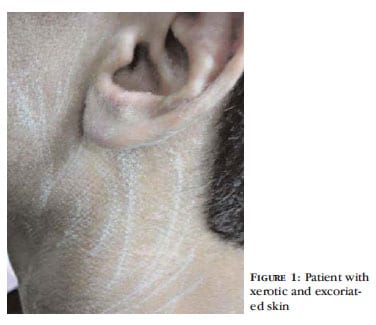Contents
General description of the disease
Oligophrenia is a delay in the development of the psyche or its incomplete development of a congenital or acquired nature. It manifests itself in the form of a violation of intellectual abilities, which are caused by various pathologies of the brain. This leads the patient to the inability to adapt in society.
Oligophrenia, as a concept, was first introduced by the German psychiatrist Emil Kraepelin. The concept of “mental retardation” is considered synonymous with the modern term “mental retardation”. But, it is worth distinguishing between these concepts. Mental retardation is a broader concept and includes not only mental aspects, but also neglect of the child’s pedagogical education.
Oligophrenia is classified according to several characteristics.
Depending on whether you how severe the form and the degree of the disease, oligophrenia is divided into:
- debility is the least pronounced insanity;
- imbecility – oligophrenia of moderate severity;
- idiocy – the disease is very pronounced.
This division belongs to the traditional approach.
Depending on the defects and anomalies Maria Pevzner (USSR scientist, psychologist, psychiatrist, well-known defectologist) identified 3 main types of the disease:
- 1 oligophrenia of an uncomplicated type;
- 2 oligophrenia, complicated by disorders in the patient’s neurodynamics (in this case, the defects manifested themselves in 3 forms: in the first case, excitement prevailed over inhibition, in the second, everything was opposite to the first, and in the third case, a pronounced weakness of the main nervous functions and processes stood out);
- 3 oligophrenia with poorly expressed frontal lobes (with frontal insufficiency).
The modern classification of the severity of oligophrenia depends on the intelligence level of the patient and ICD-10 (International Classification of Diseases of the 10th revision), 4 degrees of severity are provided:
- easy: IQ has reached a value between 50 and 70;
- moderate mental retardation: the child’s intelligence level ranges from 35 to 50;
- Heavy: IQ is in the range of 20-35;
- deep: Your child’s IQ is less than 20.
Causes of Oligophrenia
They can be genetic or acquired.
To genetic the reasons for the development of dementia include: abnormal development of chromosomes, disruption in the functioning of individual sections of chromosomes or genes, mutations of the x chromosome.
To acquired reasons include: damage to the fetus in the womb by ionizing radiation, chemicals or infections, early delivery (very premature baby), birth trauma, brain hypoxia, severe head injury, previous infectious diseases affecting the central nervous system, neglected upbringing in the first years of a child’s life (the most common cases in children growing up in families with disadvantaged conditions).
Dementia in a child may also have an unclear etiology.
Symptoms of oligophrenia
They are extremely varied and multifaceted. It all depends on the severity and cause of the disease. Summarizing all the signs, they can be divided into 2 large groups.
- 1 insanity affects not only the cognitive process, but also the development of the child as a person as a whole. That is, such a child has impaired emotions, perception, motor skills, intellect, thinking ability, speech and will, poor memory (there may be exceptions, for example: some oligophrenics remember numbers well – phone numbers, dates or first and last names);
- 2 an oligophrenic person lacks the ability to group and generalize, there is no abstract thinking, it is monotonous, concrete.
The patient’s speech is illiterate, poor in expressions and words, there is no initiative, there is no real view of things, they are often aggressive, they cannot solve ordinary everyday issues. In childhood, almost all children suffer from bedwetting. Abnormalities in physical development are also noted.
All manifestations depend on the severity of the disease.
Useful products for oligophrenia
To stimulate cerebral metabolism, patients with oligophrenia need to eat more foods containing vitamin B. Focus on vegetables and fruits, various dishes from them (juices, mashed potatoes, jelly).
Pregnant women need adequate nutrition with the intake of all the necessary macro- and microelements, mineral salts, proteins, carbohydrates and vitamins. Proper nutrition will help eliminate the likelihood of giving birth to a premature baby and, thanks to good immunity, reduce the risk of infections entering the body.
Traditional medicine for oligophrenia
With oligophrenia, the necessary treatment is prescribed by medical workers based on the results of diagnostics, the causes of the disease. Nootropics, tranquilizers, antipsychotics, drugs containing iodine or hormones (if oligophrenia is associated with malfunctions in the thyroid gland) or only diet therapy for phenylpyruvic oligophrenia may be prescribed.
Instead of nootropic drugs, traditional medicine provides for the use of lemongrass broths, ginseng and aloe juice. Before you start taking them, it is imperative that you consult with your doctor. Otherwise, with the wrong dose and use, the patient may experience psychosis or aggression and anger. This is due to the fact that these plants activate brain activity.
Dangerous and harmful products with oligophrenia
With phenylpyruvic oligophrenia (phenylalanine metabolism is impaired), patients are excluded from the diet of natural protein (this includes animal products: fish, seafood, meat, including milk). This is because these foods contain phenylalanine. This diet must be followed at least until adolescence.
For any type of oligophrenia, it is necessary to exclude the consumption of all non-living food. It negatively affects all functions of the body, which makes parenting even more difficult and causes unnecessary health problems. The additives in unhealthy food slow down all metabolic processes, thicken the blood, which causes blood clots and disrupts blood circulation (this is especially dangerous for blood flow to and from the brain).
Attention!
The administration is not responsible for any attempt to use the information provided, and does not guarantee that it will not harm you personally. The materials cannot be used to prescribe treatment and make a diagnosis. Always consult your specialist doctor!










